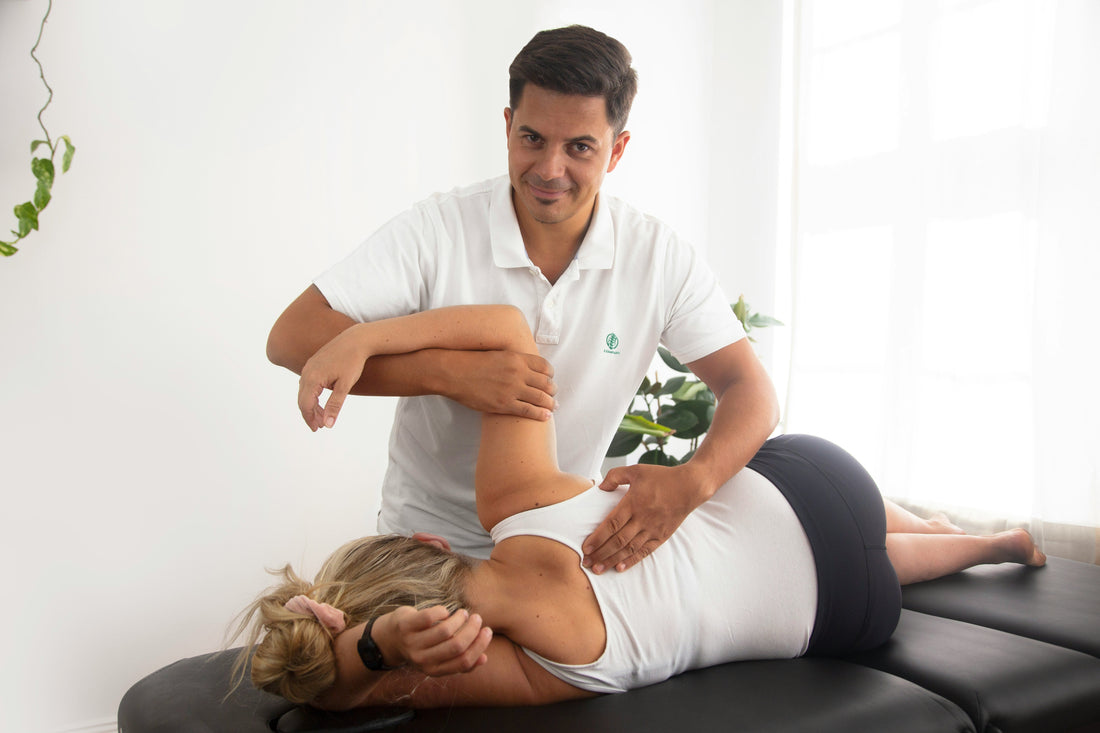
How to Heal a Strained Back Muscle in 8 Simple Steps
Share
A pulled back muscle often begins as a sharp, sudden pain during activities like lifting or bending. Alternatively, it can develop slowly, worsening over time. It’s a frequent injury, though that may offer little comfort, especially if it disrupts your daily activities.
Technically, a "pulled" muscle is a strain—a muscle or tendon injury caused by overstretching or tearing the tissue. This is different from a sprain, which involves damage to ligaments (the tissues that connect bones, muscles, and organs).
The pain from a pulled back muscle can range from mild discomfort to severe agony, and recovery can take anywhere from a few weeks to several months. Back pain due to muscle strain is one of the most common complaints treated by healthcare professionals. Luckily, most cases can be managed at home with the following tips. However, if the pain is too intense or restricts your mobility, it's important to seek medical advice.
Recognizing Symptoms
The discomfort of a pulled back muscle varies depending on the area affected. The spine is divided into three main sections: the neck (cervical spine), upper back and shoulders (thoracic spine), and lower back (lumbar spine). Here's how each area might feel:
-
Neck Strain:
-
Pain in the neck and upper back
-
Limited neck movement
-
Stiffness or tightness
-
Pain radiating to the shoulders or arms
-
Headaches
-
Shoulder and Upper Back Strain:
-
Pain between the shoulder blade and spine
-
Muscle spasms in the upper back
-
Tightness or knots in the shoulders
-
Pain with shoulder movement
-
Lower Back Strain:
-
Dull ache and stiffness
-
Pain that worsens with movement
-
Discomfort that spreads to the hips or legs
-
Difficulty moving or bending
-
Muscle spasms in the lower back
-
Pain when sitting, standing, or walking
Common Causes and Diagnosis
Pulled back muscles can result from various factors:
-
Falls: A sudden fall or awkward landing can strain back muscles.
-
Repetitive Movements: Frequent bending, twisting, or reaching can put strain on your back muscles.
-
Improper Lifting: Lifting objects incorrectly, especially while twisting or lifting something too heavy, is a common cause of muscle strain.
-
Excess Weight: Carrying excess weight, such as during pregnancy or obesity, can place extra stress on your back.
-
Sedentary Lifestyle: Lack of exercise can weaken back muscles and increase the risk of injury.
-
Poor Posture: Incorrect posture while sitting or engaging in physical activity can contribute to muscle strain.
If you're unsure whether it’s a muscle strain or another issue (like a herniated disc or bone injury), consult with a healthcare provider for an accurate diagnosis before beginning treatment.
Steps for Treating a Pulled Back Muscle
While treatment generally follows the same principles, always check with a healthcare professional before starting any home treatment. After receiving medical advice, follow these steps for relief:
-
Rest and Relax Applying cold to the injury right away can help reduce swelling and pain. Use a cold pack for 15–20 minutes several times a day during the first 48 hours. Cold therapy, like REPLAY Cold Compression Therapy, is especially effective in controlling swelling and alleviating muscle spasms.
-
Use Compression Applying compression with a bandage or specialized therapy system can help reduce swelling and speed up healing. Compression promotes blood flow and supports the injured area.
-
Limit Activity Avoid movements that exacerbate the pain, especially during the initial stages. However, avoid prolonged rest as well—staying too inactive can slow down recovery. After the initial pain subsides, gently ease back into your routine to maintain strength in the affected muscles.
-
Gentle Stretching Light stretching can promote healing by increasing circulation to the injured muscle. Heat therapy before stretching may also help ease stiffness and improve flexibility.
-
Over-the-Counter Pain Relief Pain relief medications can help with discomfort, but use them sparingly and follow dosage instructions carefully. Consult your doctor before using any medication, particularly if you're dealing with swelling or inflammation.
-
Strengthen the Area As pain begins to subside, consider adding light strengthening exercises to rebuild muscle strength. Avoid resting too much, as this can lead to muscle weakness and delay recovery.
-
Massage for Relief A gentle massage can increase blood circulation to the injured muscle, promoting faster healing. Make sure to use light pressure and avoid aggravating the pain.
-
Heat Therapy After a few days, alternating between cold and heat can help reduce pain and ease muscle tightness. Heat can also improve blood flow to the affected area, aiding in the recovery process.
REPLAY Cold Compression Therapy combines cold and active compression, which can help reduce swelling, ease pain, and boost circulation—getting you back on track faster.
By following these steps and allowing time for healing, you'll increase your chances of a successful recovery and a return to your usual activities. Always consult with a healthcare provider to ensure you're following the right approach for your specific injury.
